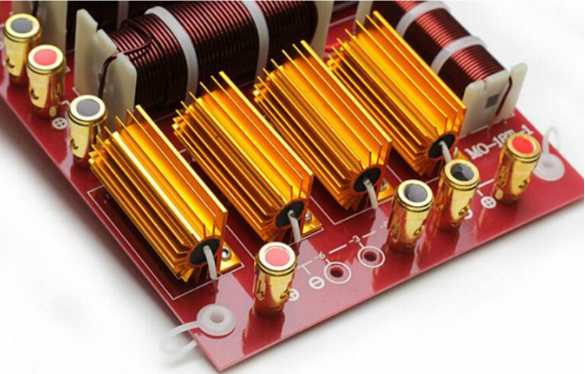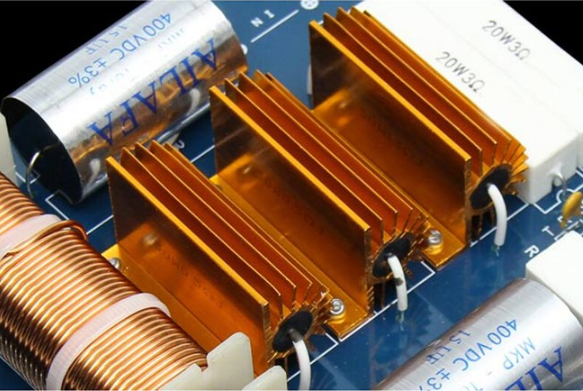Position:Home » Technical Articles
High-power Wirewound Resistors Using Cooling Method to Dissipate Heat
Writer:Microhm Page View:Date:2019-04-22
A resistor is an electronic component that generates heat. When using a resistor, it needs to be designed for heat dissipation. If the resistor is not designed well, it can easily cause the resistor to be broken down or the entire resistor to be damaged. Especially for high-power wirewound resistors, such resistors generate a lot of heat during operation due to their high power. At present, air-cooling uses aluminum radiators, heat pipe radiators, circulating water and more to dissipate heat from high-power winding resistors.
 High-power winding resistors use circulating water cooling to greatly improve heat dissipation efficiency, allowing the chip to operate at lower temperatures and increasing the life of high-power wirewound resistors. However, the use of circulating water cooling requires water circulation and processing equipment. In order to prevent rust and freezing caused by pure water, a mixture of water and alcohol is generally used. The mixing ratio affects the thermal resistance of the coolant. When the mixing ratio is 50%, the thermal resistance generally increases by 50%. Under normal circumstances, the water flow rate should be no less than 8 liters/min. In a hot and humid environment, the relative humidity in the air is relatively high. When the water temperature is low and the temperature of the surface of the water-cooled radiator is lower than the dew point, the surface will condense and affect the insulation. Measures should be taken according to the standard requirements to properly raise the water temperature and reduce the relative humidity of the ambient air.
High-power winding resistors use circulating water cooling to greatly improve heat dissipation efficiency, allowing the chip to operate at lower temperatures and increasing the life of high-power wirewound resistors. However, the use of circulating water cooling requires water circulation and processing equipment. In order to prevent rust and freezing caused by pure water, a mixture of water and alcohol is generally used. The mixing ratio affects the thermal resistance of the coolant. When the mixing ratio is 50%, the thermal resistance generally increases by 50%. Under normal circumstances, the water flow rate should be no less than 8 liters/min. In a hot and humid environment, the relative humidity in the air is relatively high. When the water temperature is low and the temperature of the surface of the water-cooled radiator is lower than the dew point, the surface will condense and affect the insulation. Measures should be taken according to the standard requirements to properly raise the water temperature and reduce the relative humidity of the ambient air.
When the high-power winding resistance is forced air cooling, the manufacturing process of the heat sink is different, and the thermal conductivity of the heat sink is much larger than that of the aluminum alloy heat sink. The thickness of the base plate of the radiator should meet the heat conduction. Especially for equipment that uses surge current, such as soft starter, the thickness of the bottom plate should be more than 20mm. The number of fins and the corrugation should take into account the fluid resistance under the premise of ensuring the maximum heat dissipation area, and the ratio between the height and the thickness of the fins should be reasonable.
 High-power wirewound resistors should be installed in place when installing the heat sink. The layout of the device on the heat sink should be such that the thermal resistance at the center of the heat sink is minimal. When installing the heat sink surface of the module, paying attention to flatness and surface roughness. If the surface is recessed, it will directly lead to an increase in contact thermal resistance.In order to make the contact thermal resistance small, a very thin layer of thermal grease should be evenly applied between the heat sink and the mounting surface of the high-power winding resistor.
High-power wirewound resistors should be installed in place when installing the heat sink. The layout of the device on the heat sink should be such that the thermal resistance at the center of the heat sink is minimal. When installing the heat sink surface of the module, paying attention to flatness and surface roughness. If the surface is recessed, it will directly lead to an increase in contact thermal resistance.In order to make the contact thermal resistance small, a very thin layer of thermal grease should be evenly applied between the heat sink and the mounting surface of the high-power winding resistor.
Generally, the above three points can be used to dissipate heat from high-power wirewound resistors. However, the environment of high-power wirewound resistors will change. The heat dissipation method of each type of it will also be different. It is necessary to select the high-power winding resistance heat dissipation method in the environment, so that it can accurately judge which high-power winding resistance heat dissipation method is adopted.

When the high-power winding resistance is forced air cooling, the manufacturing process of the heat sink is different, and the thermal conductivity of the heat sink is much larger than that of the aluminum alloy heat sink. The thickness of the base plate of the radiator should meet the heat conduction. Especially for equipment that uses surge current, such as soft starter, the thickness of the bottom plate should be more than 20mm. The number of fins and the corrugation should take into account the fluid resistance under the premise of ensuring the maximum heat dissipation area, and the ratio between the height and the thickness of the fins should be reasonable.

Generally, the above three points can be used to dissipate heat from high-power wirewound resistors. However, the environment of high-power wirewound resistors will change. The heat dissipation method of each type of it will also be different. It is necessary to select the high-power winding resistance heat dissipation method in the environment, so that it can accurately judge which high-power winding resistance heat dissipation method is adopted.
Keywords:
Latest News
- Resistor's role in measuring and correcting LED,,,
- Single through-hole resistors' characteristics ,,,
- Why shunt resistors for current sense applicati,,,
- Metal-film resistors with small size, high resi,,,
- 36W High-Current Shunt Resistors MMS8420,,,
- 1W Surface Mount Resistor MPR1206,,,
- An Overview of Microhm Electronics' Resistor Pr,,,
- More anti-sulfur resistors used in harsh envir,,,
- Resistance changes with temperature,,,
- 140W TO247 High Power Heatsinkable Resistor,,,
- MMS5930 is ideal for current sensing in industr,,,
- Shunt resistors selection for engineers' design,,,
- Considerations for choosing precision resistors,,,
- Ceramic Encased Cement Resistors NWH Series for,,,
- Resistors for Passive Balancing in Battery-Pow,,,
Hot Articles
- Microhm will take part in 10th Automotive World,,,
- Thanks for Visiting Microhm's Booth E5-5706 in ,,,
- Resistors in Short Supply: Blame Cars,,,
- New lunch: High Power Precision Shunt Resistor,,,,
- How to Test a Resistor,,,
- Innovative Technology, Future Electric: Electri,,,
- What is Precision Resistors?,,,
- SMD Resistors Sizes and Packages,,,
- The Construction and Features of Metal Film Res,,,
- What is a TO-220 Resisor?,,,
- Hot Selling Products: Precision Shunt Resistors,,,
- How to Calculate the Equivalent Resistance Valu,,,
- What is a Fixed Resistor?,,,
- Resistors in LED Circuits,,,
- Resistors Types and Materials Overview,,,
Resistance applications
- Precision Resistors' Construction and TCR,,,
- Heater Blower Motor Resistor in Air Conditioner,,,
- Industrial Roberts Applied to Solar Photovoltai,,,
- The Measurement Accuracy of Automotive Shunt is,,,
- The Four Important Functions of Alloy Resistors,,,
- Urbanization Development Bringing the Transform,,,
- Why Zero-Ohm Resistors?,,,
- Shunt Resistor MMS8420 for High Current Stable ,,,
- Miniature future for passive electronic compone,,,
- Difference Between High Precision Resistors and,,,
- Carbon Film Resistors' Features and Application,,,
- The Main Application for High Precision and Low,,,
- Select the Right Resistor for Harmonic Filterin,,,
- BMS for New Energy Vehicle,,,
- Surface Mount Resistor's Size and Package ,,,
